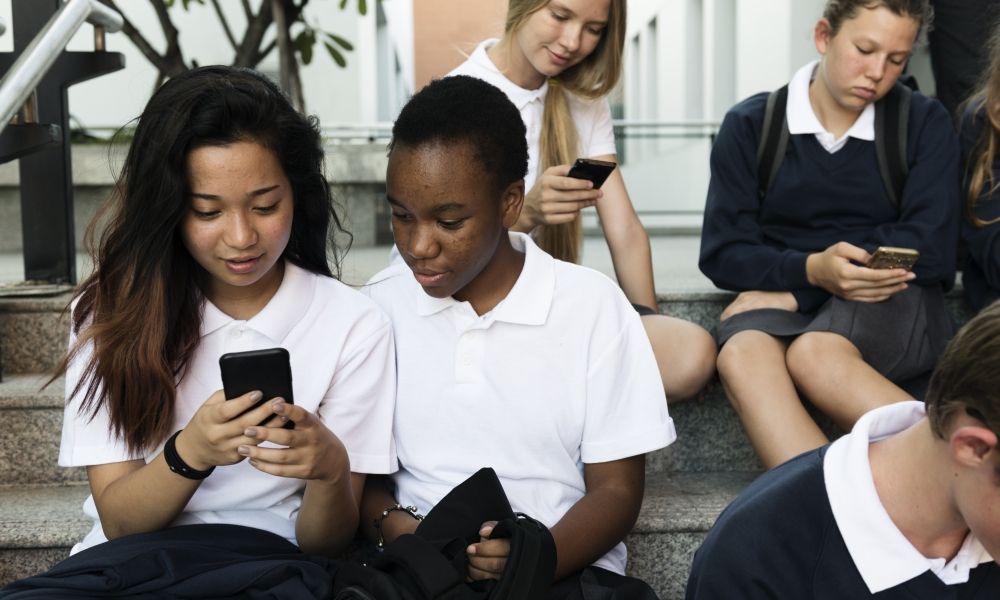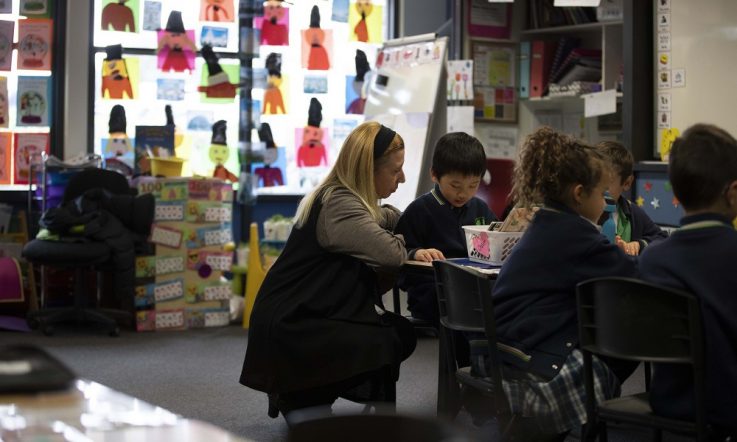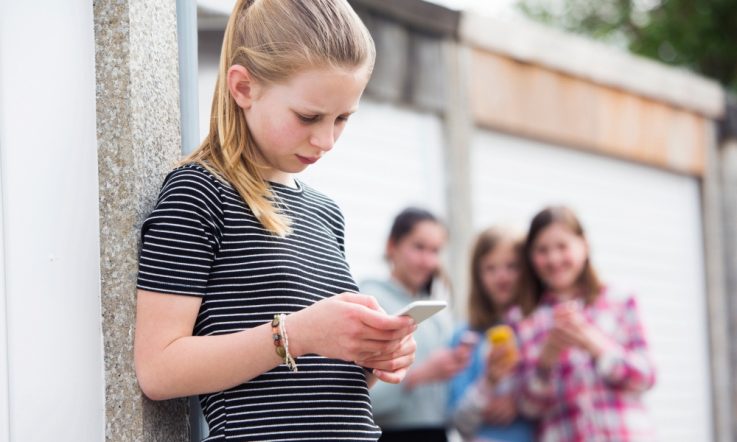Screen time and students' mental health
The presence of digital technologies in the classroom is not a new phenomenon. Teachers have long recognised the educational and developmental benefits that may be derived from their use in schools.
The commonplaceness of digital technologies in young people's everyday lives nonetheless causes concern for educators, parents and policymakers – an understandable concern given increasing media and policy debate on the topic, and a lack of evidence-based research or strategies. Educators and parents are questioning the effect that technology can have on students' mental health and wellbeing, now more than ever.
The amount of time that students are spending in front of screens has undoubtedly increased in the past decade. Long gone are the days where students would write essays by hand or gather research materials from hardcover books. More and more, students now have access to devices like personal computers, mobile phones and tablets in the classroom. While these technologies have tremendous benefits for students' learning and social development, they have also presented new challenges for our educators.
Many students in secondary school now have access to, or own, a smartphone, allowing them to share content across apps and social networking platforms like Facebook, Instagram and Snapchat. Those platforms have allowed young people to be more interconnected than ever before.
Cyberbullying risks
Yet, increased interconnectedness in the online world has meant that schoolyard comments and bullying behaviours no longer stop when the home bell rings. The bullying now takes place online, after hours. According to Australia's eSafety Commissioner Julie Inman Grant, one in five children have experienced some form of cyberbullying (Karp, 2018).
Cyberbullying, unlike traditional bullying, is said to be far more invasive and complex. It can range from abusive text messages, humiliation, exclusion, imitation, and nasty gossip. There is no doubt that bullying of this nature may have an impact on the mental health of young people.
Some governments have recognised these risks. In June this year the Victorian Government announced that from Term 1 2020, students will be banned from using their mobile phones during school hours. The Government hopes that the ban will not only curb cyberbullying, but that it will ‘remove a major distraction from [the] classrooms, so that teachers can teach, and students can learn in a more focused, positive and supported environment' (Victoria State Government, 2019).
With time and more research, it will be interesting to see how such policies influence the mental health of our young people. Bullying is increasingly occurring outside of school hours. The burden to police screen time might then fall on the often time-poor parent, who can be entirely unaware of how their children are being harmed online, or what harm their child may be doing to others online. Both scenarios can be distressing for parents.
The role of educators
As educators, we are in a position to teach our students how to use digital technologies responsibly, so as to support their mental health and wellbeing. The question is how.
A lack of evidence-based strategies, coupled with parent-fuelled anxiety and the everyday stressors of teaching, can put any educator in an uncomfortable position when it comes to dealing with the mental health and wellbeing of the students in their classroom. With half of all mental health conditions starting before the age of 14, educators will be some of the first to notice the signs and symptoms of poor mental health.
These signs may be subtle, but when pieced together they can paint a broader picture that will tell an educator that something is not quite right. It can be difficult for educators to know where to look and what to do when these signs present themselves. Educators are not expected to formally diagnose or treat a student's mental health. They can, however, be a valuable support to and resource for students who are struggling.
In my previous columns I have talked about the national initiative Be You, led by Beyond Blue. Be You aims to transform Australia's approach to supporting children's and young people's mental health in early learning services and schools. As an educator or a leader, Be You provides you with resources to develop your knowledge of mental health to expand your existing strategies.
The resources are free to access, and are available to every educator, early learning service, and school across Australia. I encourage you to take a look at the resources provided on the Be You website beyou.edu.au, and to ask your service or school to get involved.
Technology is an inevitable part of our modern lives. We can't protect our young people from the pitfalls of technology 24/7, but we can work to improve their mental health in and out of the classroom.
With thanks to Airlie Waterman, University of Adelaide Arts Intern, for her contribution to this piece.
References
Karp, Paul. (2018), ‘One in five Australian children are victims of cyberbullying, e-safety commissioner says', The Guardian, viewed 13 October 2019, https://www.theguardian.com/society/2018/oct/03/one-in-five-australian-children-are-victims-of-cyberbullying-e-safety-commissioner-says.
Kessler, R. C., Berglund, P., Demler, O., Jin, R., Merikangas, K. R., & Walters, E. E. (2005). Lifetime prevalence and age-of-onset distributions of DSM-IV disorders in the National Comorbidity Survey Replication. Archives of general psychiatry, 62(6), 593-602.
Victoria State Government. (2019) 'School Policy: Students Using Mobile Phones', Victoria State Government School Policy and Advisory Guide, viewed 13 October 2019, https://www.education.vic.gov.au/school/principals/spag/safety/Pages/mobilephones.aspx.



